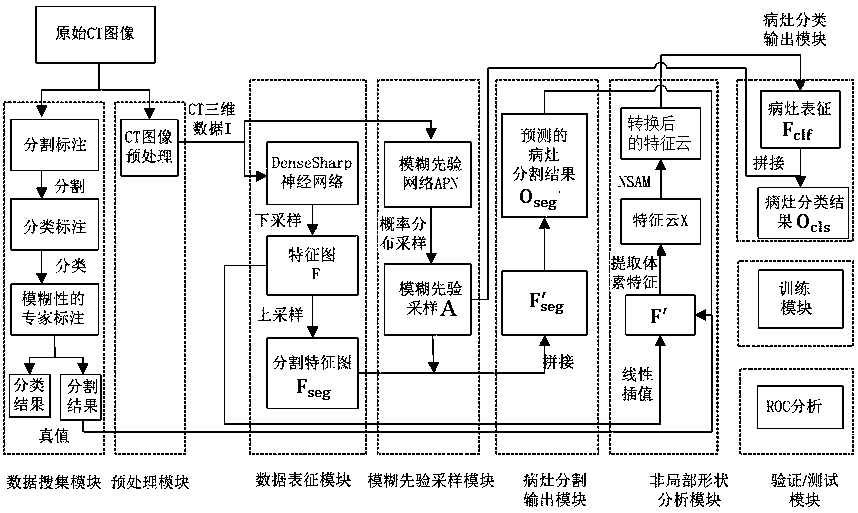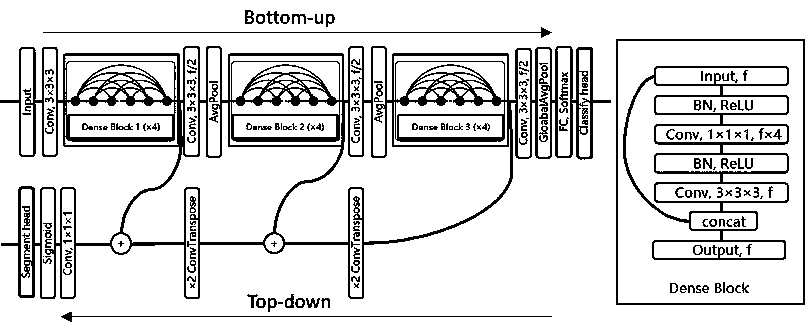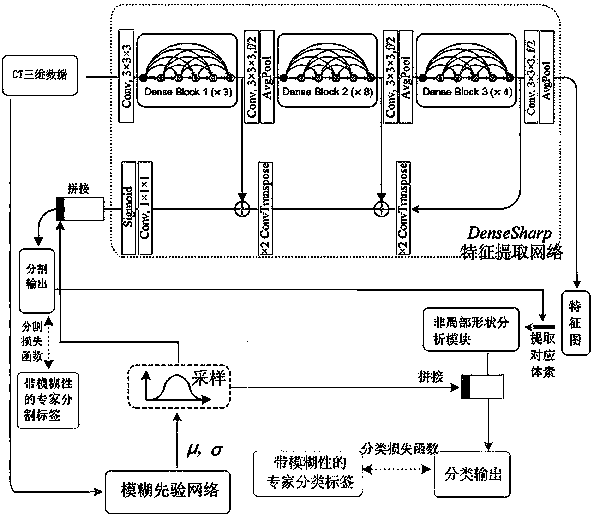Focus classification system based on deep learning and probability imaging omics
A deep learning and radiomics technology, applied in the field of lesion CT image classification and lesion classification system, which can solve the problems of ambiguous ambiguity in lesion classification, insufficient classification accuracy, and inability to eliminate ambiguity in classification.
- Summary
- Abstract
- Description
- Claims
- Application Information
AI Technical Summary
Problems solved by technology
Method used
Image
Examples
Embodiment 1
[0053] In this embodiment, the present invention proposes a lesion classification system for classifying lung CT images of pulmonary nodules. The scope of application of the present invention is not limited to pulmonary nodules, and is also applicable to the classification of other lesions (such as masses, etc.).
[0054] The overall framework of the lesion classification system based on deep learning and probabilistic radiomics proposed by the present invention is as follows: figure 1 shown, including:
[0055] Data collection module: using the public lung nodule dataset LIDC-IDRI (Armato SG III, et al.: The LungImage Database Consortium (LIDC) and Image Database Resource Initiative (IDRI): A completed reference database of lung nodules on CT scans. MedicalPhysics, 38: 915--931, 2011), the public data set contains 2635 nodules, each of which is labeled by 4 experienced radiologists, and all 2635 nodules are identified by 4 doctors The same lesion is classified and segmented...
PUM
 Login to View More
Login to View More Abstract
Description
Claims
Application Information
 Login to View More
Login to View More - R&D
- Intellectual Property
- Life Sciences
- Materials
- Tech Scout
- Unparalleled Data Quality
- Higher Quality Content
- 60% Fewer Hallucinations
Browse by: Latest US Patents, China's latest patents, Technical Efficacy Thesaurus, Application Domain, Technology Topic, Popular Technical Reports.
© 2025 PatSnap. All rights reserved.Legal|Privacy policy|Modern Slavery Act Transparency Statement|Sitemap|About US| Contact US: help@patsnap.com



